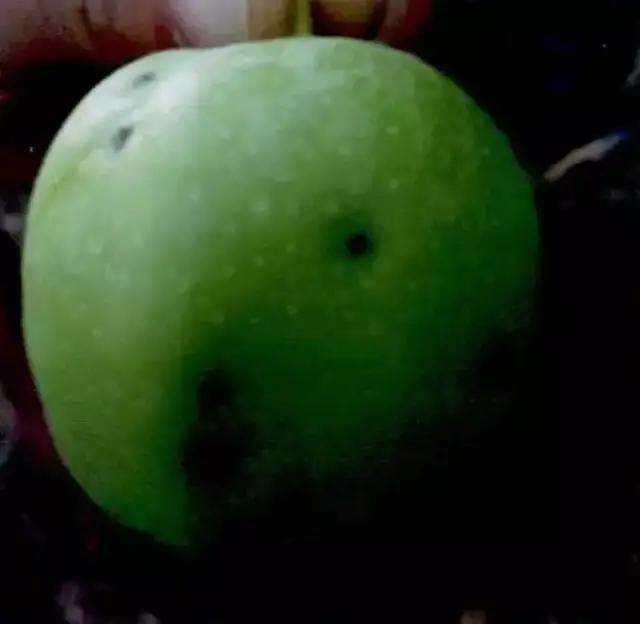| [Visitor (113.218.*.*)]answers [Chinese ] | Time :2024-04-07 |  Pathogenic features Pathogenic features
The pathogen is Conchospora polycocetes, which belongs to the subphylum Ascomycetes, Sclerotinia class, Coccidiomycetes, Roundporaceae, and Cosporium. The sexual stage of the bacterium is relatively rare, and the asexual stage is. Ascomycetes are black, spherical, with a short neck or papillary orifice, (300-400) microns in size× (180-320) microns, without a subtraction. Ascosporomonocytes are colorless and (23-34) microns in size × (11-15) microns. Conidia. Oblate spherical or spherical, brown, 200-300 microns in diameter. The conidia are oval, ovate, unicellular, occasionally twin, colorless at first, later brown, (20-30) microns in size× (10-14) microns. The germination temperature of the conidia is 16-32 °C, and the relative humidity is above 96%. This pathogen can infect apples, pears and ancestral trees.
2
Harmful symptoms
Apple black rot mainly harms fruits, but also leaves and branches, and occurs widely, but not very seriously.
Branches: Mainly harmful to 1-2 year old branches. Russet to black fusiform ulcer spots are formed at the dead shoots and dead buds, the edges are not obvious, the center is slightly concave, and small black spots are scattered in the later stage, and the cortex of the diseased part is cracked and warped, and necrotic and peeling off. Causes branch dieback.
Leaves: Initial lesions round, 2-3 mm, purple, later blackish-brown, concave in the middle, raised margins, dark gray in the middle, dense with small black spots. In severe cases, the leaves fall early.
Flowers: The lesions are mostly sepals at the beginning, with small red spots at first, and the posterior outer edge is a red purple lesion, and the whole sepals turn black-brown after a few weeks.
Fruit: The calyx depression produces small reddish-brown lesions, which are black-brown and have concentric ring patterns. When the lesions enlarge, the fruit turns brown and rots. After the diseased fruit loses water, it shrinks and becomes a black dead fruit.
3
Infection cycles
The pathogen mainly overwinters in the diseased part of the disease in mycelium and conidia, or in deciduous and stiff fruits. In the second growing season, conidia are produced, which are spread by wind and rain, and invade from wounds on fruits and branches, or from stomata in leaves, for initial infection.
4
Epidemic law
Host resistance: The incidence of different varieties is different, and varieties such as Hongyu, Ruiguang and Mellow are more diseased. Weak-growing fruit trees and branches were more severely affected, near-ripening fruits were more severely affected, and adult leaves were more severely affected.
Climatic factors: Conidia release depends on the amount and duration of rainfall. When the petals fall off 30-45 days after the petals are shed, ascospores are produced, which spread with airflow.
5
Prevention and control methods
Apple black rot is not harmful and does not need to be controlled separately.
Agricultural control: planting disease-resistant varieties. When cleaning up the orchard, attention should be paid to taking out the orchard with pruning branches, diseased leaves, and diseased stiff fruits, etc., and burning them in a concentrated manner, so as to strengthen cultivation management, enhance tree strength, and improve disease resistance.
Chemical control: Combined with the prevention and control of other rotten fruit diseases, spray 450-500 times of 40% Dafudan wettable powder, or 450-500 times of 40% gramsylan wettable powder, or 450-500 times of 40% sterilized Dan wettable powder, or 500 times of 50% mixed sulfur suspension, or 500-600 times of 36% thiophanate-methyl suspension, or 1500 times of 50% benmonyl wettable powder. Spray once every 10-14 days, 2-3 times in a row. |
|
